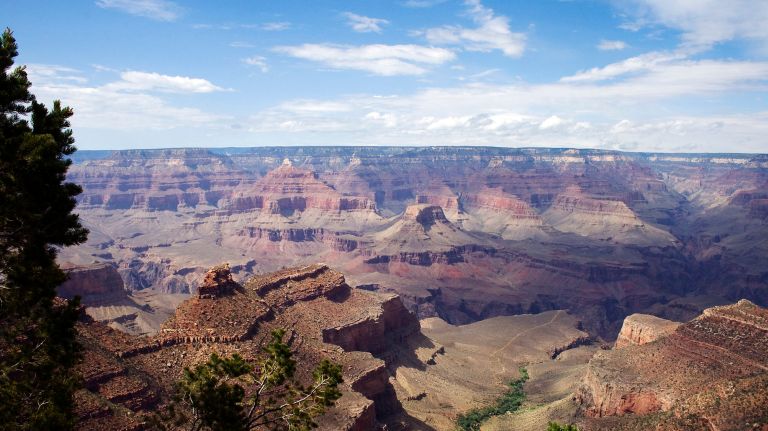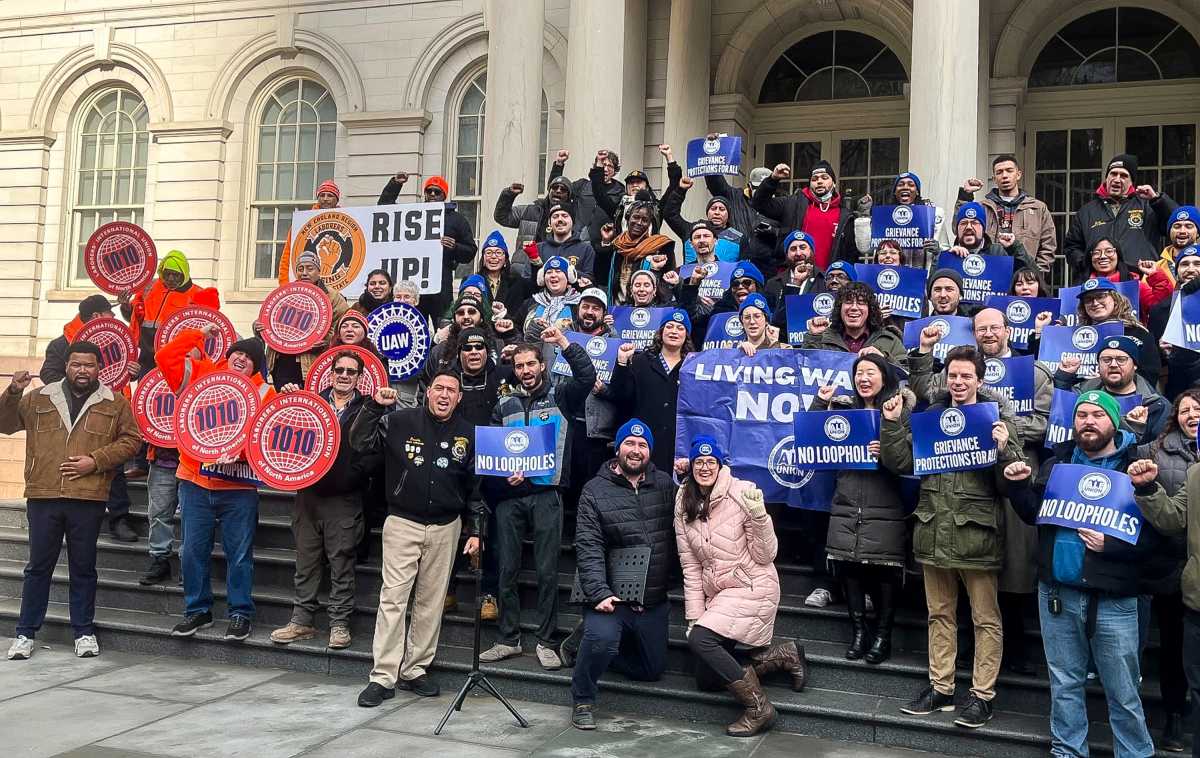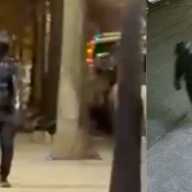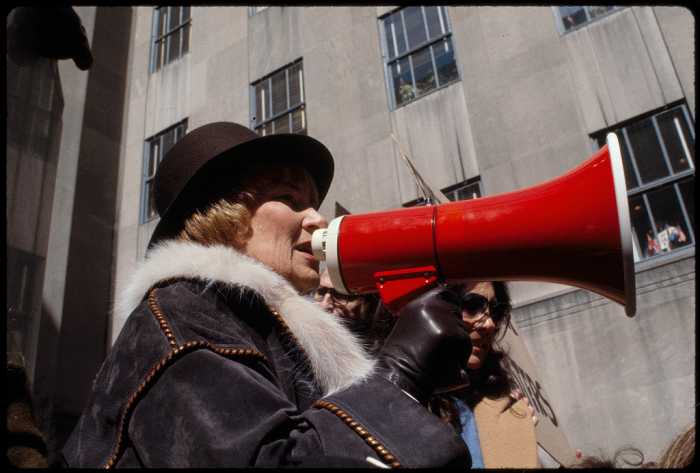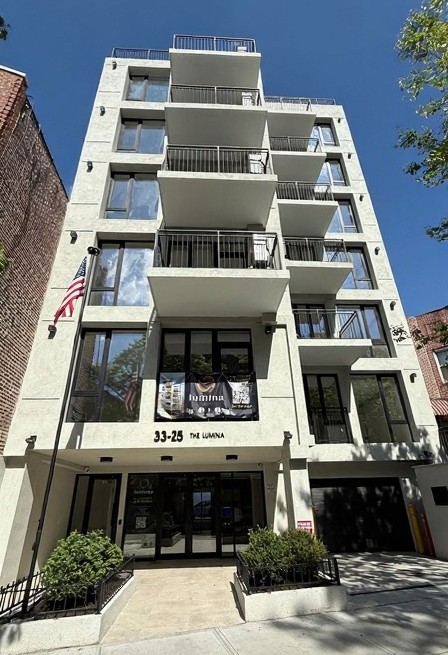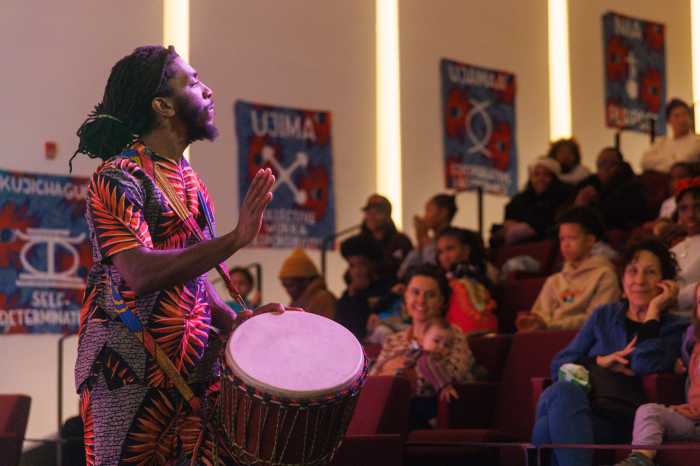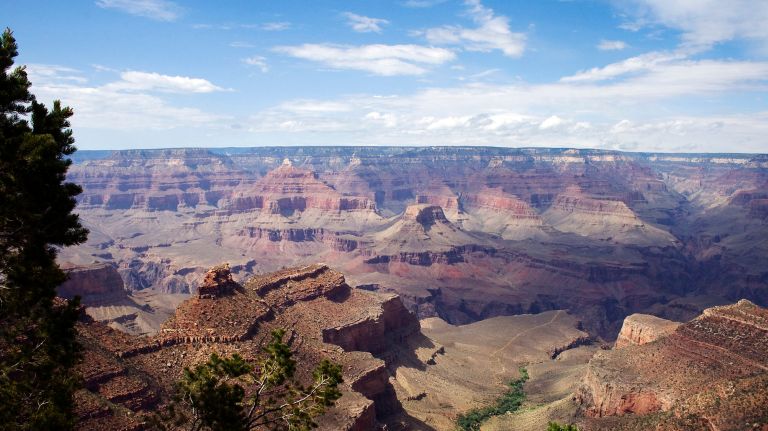
Seeing the Grand Canyon, one of the seven natural wonders of the world, is on many a travelers’ bucket list. This year, Grand Canyon National Park celebrates its centennial anniversary (though the canyon itself is millions of years in the making), offering more of an incentive to visit the Arizona attraction.
Active options
To fully experience its variety of terrain, diverse flora and fauna and intense silence, you’ll need to go deep into the canyon. Bright Angel Trail is the most popular hike down to the canyon’s floor. It’s a rigorous, nearly 8-mile descent from the trailhead, plus it’s more challenging on the way back up. Many hikers choose an abbreviated option and turn around at Three-Mile Resthouse.
Though it won’t take you into the canyon, Rim Trail connects a series of scenic overlooks. It’s over a dozen miles long, partly paved and without significant changes in elevation. Clearly marked bus stops scattered along the way offer the flexibility to combine hiking with riding the shuttle.
The sure-footed mule is a time-honored method of transportation. An overnight mule ride goes to the canyon floor, where riders sleep at the only lodging below the rim, Phantom Ranch (888-297-2757, grandcanyonlodges.com/lodging/phantom-ranch). There’s also a three-hour ride along the canyon’s rim, complete with saucy wranglers dishing out interpretive information while you’re bouncing in the saddle (303-297-2757, grandcanyonlodges.com/plan/mule-rides).
To experience the power of the Colorado River, adventure seekers should consider white-water rafting. Grand Canyon Whitewater (800-343-3121, grandcanyonwhitewater.com) offers a variety of multiday guided trips down the Colorado River that include camping along the river’s edge.
The Greenway Trail’s 6 miles of paths are a dream to pedal. Rentals and guided tours are available at Bright Angel Bicycles (10 South Entrance Rd., 928-679-0992, bikegrandcanyon.com). Just keep in mind that bikes are not permitted below the rim.
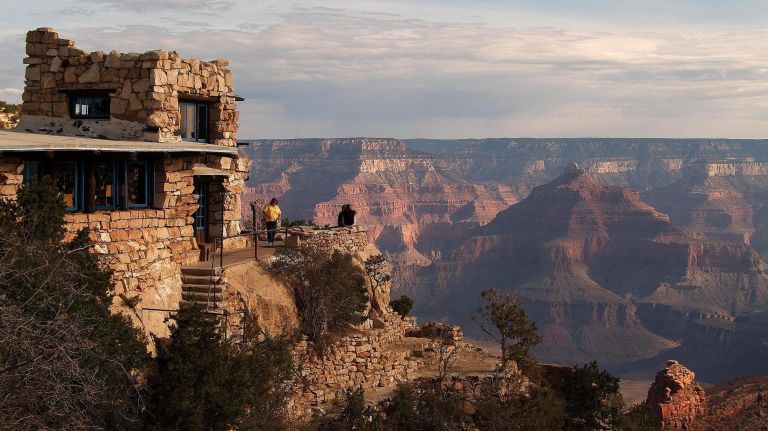
Local culture
The canyon’s otherworldly rock formations, striking color palette and jaw-dropping size and depth should make even the most unscientific visitor wonder just how it was formed. A stop at the Yavapai Geology Museum (FREE admission; Yavapai Point, 928-638-7888, nps.gov/grca/planyourvisit/yavapai-geo.htm) answers some of these geological mysteries. Displays include interpretive panels and detailed three-dimensional models.
Designed by maverick architect Mary Colter in 1914, Lookout Studio (Grand Canyon Village, 928-638-7888, nps.gov/grca/learn/photosmultimedia/colter_lookout_photos.htm) exemplifies her trademark style of integrating natural elements into design with its exposed stone exterior. There’s a small gift shop and an observation station where coin-operated telescopes offer impressive views of Indian Garden and Plateau Point.
Rich centennial programming takes the already robust schedule of ranger-led lectures, guided walks and night sky viewings up a notch (nps.gov/grca/getinvolved/2019-centennial-events.htm).
Eat
Though no one comes to the canyon for culinary motives, there are some noteworthy noshes.
For fine dining with sublime views, the dining room at the historic El Tovar hotel (1 El Tovar Road, 928-638-2631, ext. 6432, grandcanyonlodges.com/dine/el-tovar-dining-room-and-lounge) offers locally inspired choices such as Navajo fry bread. The creamy hot chocolate has a dedicated following.
The casual Maswik Food Court (202 South Village Loop Drive, 928-638-2631, grandcanyonlodges.com/dine/maswik-cafeteria) in Maswik Lodge serves soups, sandwiches and pastas that are easy on the wallet.
GOOD TO KNOW
Getting there: Fly nonstop to Phoenix or Las Vegas and rent a car for the four-hour drive. Flagstaff, Arizona’s airport is an hour away, but service is limited and there are no nonstop flights from New York.
Getting around: A network of free shuttles reliably connects park attractions (nps.gov/grca/planyourvisit/shuttle-buses.htm).
Park go-to: Most travelers head straight for the South Rim. It’s accessible year-round and home to the tourist infrastructure of Grand Canyon Village and, arguably, the best views.
Park fees: $35/car permit, $30/motorcycle permit, $20/per person entering by foot, park shuttle bus, Grand Canyon Railway or private rafting trip (FREE for 15 and younger)
Where to stay: The rustic yet dignified El Tovar (1 El Tovar Road, 888-297-2757, grandcanyonlodges.com/lodging/el-tovar-hotel) is dramatically perched on the canyon’s South Rim. Outside of the park, stay at the Grand Canyon Railway & Hotel (233 N. Grand Canyon Blvd., Williams, 928-635-4010, thetrain.com) and ride the two-hour nostalgic train right to the South Rim, complete with Wild West-style entertainment and an unforgettable panorama.



